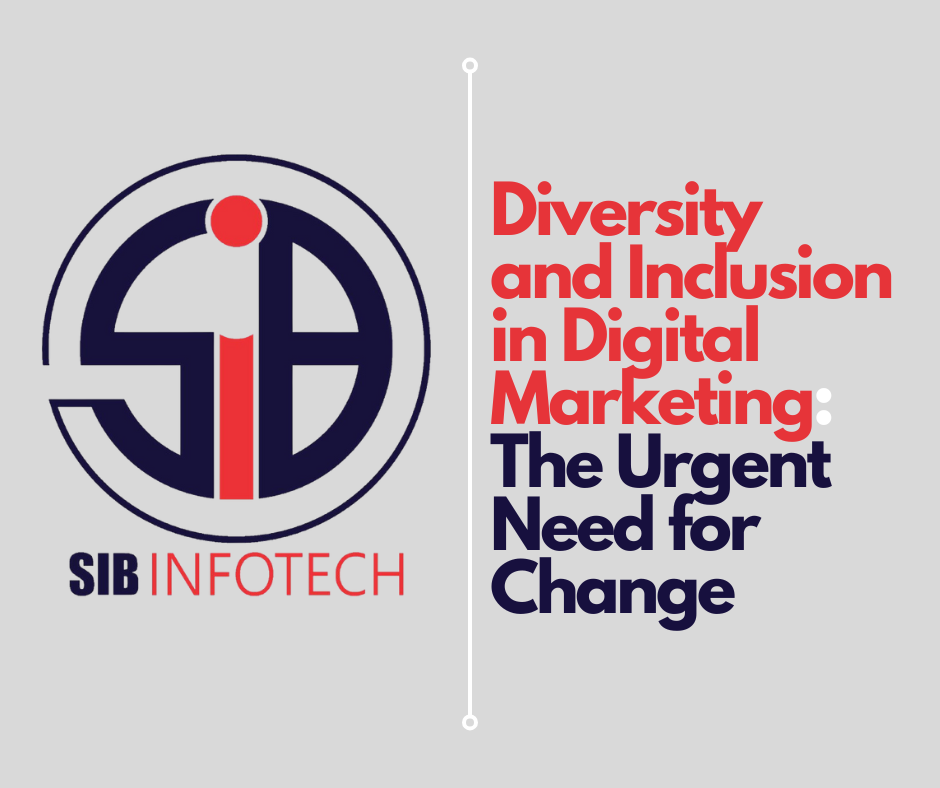Why Diversity and Inclusion Matter More Than Ever
In today’s fast-paced digital world, diversity and inclusion (D&I) in digital marketing are not just ethical imperatives but essential business strategies. The internet connects people across cultures, geographies, and backgrounds, making it imperative for brands to represent and engage with diverse audiences authentically. However, despite progress, many brands still struggle to integrate genuine inclusivity into their marketing strategies. This gap is not just a missed opportunity—it’s a major risk that could cost businesses their relevance, credibility, and long-term success.
The Digital Marketplace: A Call for Representation
The internet is a global marketplace, with billions of people from different races, ethnicities, genders, and abilities interacting daily. Brands that fail to reflect this diversity in their marketing campaigns risk alienating large segments of potential customers. More importantly, consumers today are more aware and socially conscious than ever before. They demand representation and authenticity, and they are quick to call out brands that fall short.
A lack of inclusivity can lead to:
- Loss of consumer trust – Customers prefer brands that align with their values. If they perceive a company as exclusive or tone-deaf, they are likely to disengage.
- Decreased engagement – Campaigns that fail to resonate with diverse audiences result in lower engagement rates and minimal impact.
- Brand damage – A single marketing misstep can go viral for all the wrong reasons, leading to boycotts, PR crises, and financial losses.
The Business Case for Diversity in Digital Marketing
Beyond ethical considerations, there is a strong business case for diversity in marketing. Research consistently shows that companies that prioritize inclusivity outperform their competitors.
- Higher revenue – McKinsey reports that companies with high diversity in leadership see 35% higher financial returns than their peers.
- Better customer connection – Inclusive marketing fosters deeper connections with consumers, leading to higher brand loyalty and repeat business.
- Improved innovation – Diverse perspectives bring fresh ideas, making brands more creative and adaptive to market trends.
The Urgency: Brands Must Act Now
The digital landscape is evolving rapidly, and consumer expectations are shifting just as fast. Brands that fail to adapt to diversity and inclusion risk becoming obsolete. Every moment of hesitation allows competitors to step in and win over socially conscious consumers.
If you are still unsure about the importance of diversity in digital marketing, consider this: 67% of consumers say they would switch to a brand that is more inclusive (Adobe Study). Can your business afford to ignore this demand?
How to Implement Diversity and Inclusion in Digital Marketing
- Reflect Diversity in Your Content
Your marketing visuals, videos, and messages should feature people of different races, genders, ages, abilities, and backgrounds. Avoid tokenism—representation should be meaningful and consistent.
Action Step: Conduct an audit of your marketing materials and ensure they authentically reflect the diversity of your target audience.
- Use Inclusive Language
Words have power. Avoid gendered, ableist, or culturally insensitive language in your marketing copy. Use neutral and respectful language that welcomes all audiences.
Action Step: Train your marketing team on inclusive language practices and conduct regular content reviews.
- Make Your Website and Content Accessible
Many brands overlook accessibility in digital marketing. Websites, social media content, and advertisements should be designed to accommodate people with disabilities.
Action Step: Implement alt text for images, provide video captions, and ensure your website meets WCAG accessibility standards.
- Partner with Diverse Influencers
Consumers trust influencers, and partnering with a diverse range of content creators can help brands reach wider audiences authentically.
Action Step: Collaborate with influencers from different backgrounds who align with your brand values and mission.
- Avoid Stereotypes and Cultural Appropriation
Marketing that reinforces stereotypes or exploits cultures can do serious harm. Ensure your campaigns are built on genuine understanding and appreciation rather than appropriation.
Action Step: Involve cultural experts and diverse team members in campaign planning to prevent missteps.
- Listen to Your Audience
Diversity and inclusion should not be a one-time campaign but a continuous commitment. Actively listen to your audience’s feedback and evolve accordingly.
Action Step: Conduct surveys, monitor social media sentiment, and engage in conversations with your audience to ensure you are meeting their expectations.
- Build a Diverse Marketing Team
Diversity within your marketing team leads to more authentic, inclusive campaigns. When different perspectives are represented internally, they will naturally reflect in your brand’s messaging.
Action Step: Prioritize diversity in hiring, provide inclusion training, and create an internal culture that values different voices.
Final Thoughts: The Future of Digital Marketing is Inclusive
Diversity and inclusion in digital marketing are no longer optional—they are urgent necessities. Brands that fail to embrace inclusivity risk irrelevance, while those that commit to genuine representation will thrive.
The time to act is now. Consumers are watching, expectations are rising, and the businesses that take diversity seriously will be the ones that lead the digital revolution. Will your brand be one of them?
Take the First Step Today
If your brand is ready to embrace diversity but needs expert guidance, SIB Infotech and FejiRun are here to help. With a team of industry-leading professionals, we specialize in creating inclusive, high-impact digital marketing strategies that align with modern consumer expectations. Let’s work together to build a digital world where everyone is seen, heard, and valued.
Don’t wait. The future is inclusive. The time to act is now.

